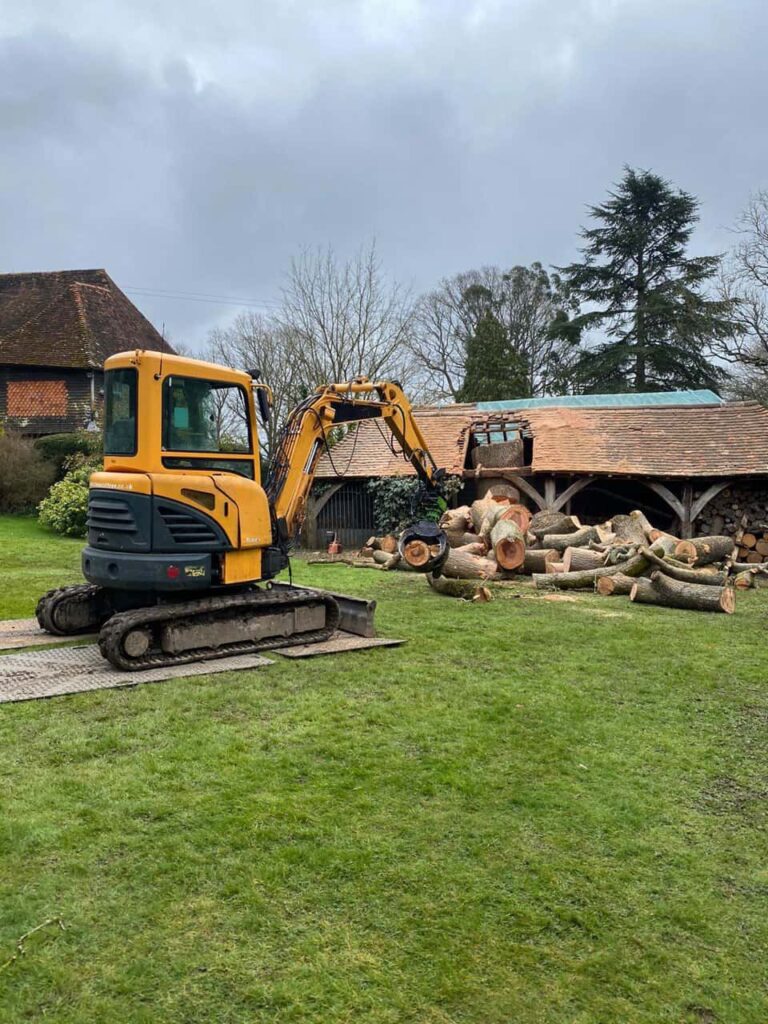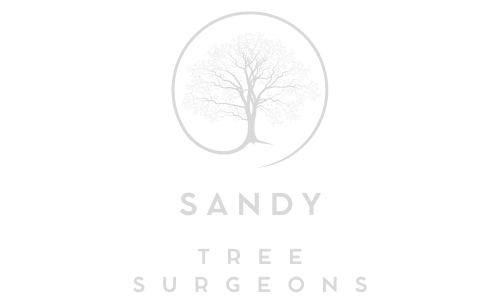How to Reuse Felled Trees: From Mulch to Furniture – Sustainable Alternatives
Tree felling is often a necessary part of property management, whether due to disease, safety concerns, or landscape redesign. However, what happens to the wood from a felled tree? At Sandy Tree Surgeons, we believe that the removal of a tree doesn’t have to lead to waste. Instead, felled trees can be reused in various sustainable and creative ways that benefit both the environment and the homeowner. In this blog, we’ll explore how you can repurpose felled trees, from creating mulch to crafting bespoke furniture, ensuring that your tree removal supports eco-friendly practices in Sandy, Bedfordshire.
1. Creating Mulch and Compost
One of the most immediate and practical uses for felled trees is turning them into mulch. Mulching involves chipping the tree’s wood into smaller pieces, which can then be spread across garden beds. Mulch helps retain soil moisture, reduces weed growth, and adds essential nutrients back into the soil as it decomposes. It’s an excellent way to maintain a healthy garden, reduce waste, and close the loop on the life cycle of the tree.
Tree stumps, branches, and bark can all be used to make mulch, and this option provides a cost-effective way of enhancing the health of your plants and garden.
Benefits of Mulch:
- Reduces the need for water by retaining moisture in the soil.
- Minimises weed growth, reducing the need for chemical herbicides.
- Decomposes naturally, adding nutrients back into the soil.
The Solution: Ask your tree surgeon to turn your felled tree into mulch for your garden or landscaping project. This eco-friendly option can also reduce the need for purchasing commercially produced mulch.
2. Firewood and Kindling
Another common and useful way to repurpose felled trees is by converting the wood into firewood or kindling. Many hardwood species, such as oak, ash, or beech, make excellent firewood once properly seasoned (dried). Using felled trees for firewood helps reduce the need for processed wood and supports sustainable heating methods for homes with wood-burning stoves or fireplaces.
Additionally, smaller branches and twigs can be bundled into kindling, making them a convenient source for starting fires.
The Solution: Have your felled tree cut into logs for firewood. Ensure that the wood is seasoned properly to maximise its efficiency and heat output.
3. Wood Chips for Pathways
Wood chips created from felled trees can be used to create attractive and functional garden pathways. Laying wood chips along paths not only provides a natural and visually appealing surface, but it also helps to prevent soil erosion, offers good drainage, and can suppress weeds in the surrounding areas.
Wood chip pathways are a sustainable alternative to paving and are relatively easy to maintain. They can be used in garden landscapes, around vegetable plots, or as walkways between flower beds.
The Solution: Use the wood chips from felled trees to create pathways that blend seamlessly into your garden while offering a practical and environmentally friendly solution.
4. Crafting Bespoke Furniture
For those with a creative flair or an interest in woodworking, felled trees can be transformed into beautiful, bespoke furniture. From rustic benches to custom tables, the possibilities are endless when it comes to crafting unique pieces from the timber of a felled tree.
Working with a local carpenter or woodworker, you can preserve the memory of a much-loved tree by repurposing its wood into a practical and long-lasting piece of furniture. Not only does this provide a sustainable way of reusing the tree, but it also gives you a meaningful connection to the furniture, knowing that it came from your own garden.
The Solution: Consider having the wood from your felled tree turned into custom furniture or decorative items, ensuring that the tree lives on in a new and creative form.
5. Wildlife Habitats and Wood Piles
If sustainability and supporting local wildlife are important to you, leaving some felled wood in your garden can create habitats for a variety of species. Wood piles made from logs, branches, and other parts of the tree can provide shelter for insects, small mammals, and birds.
Deadwood habitats can also attract beneficial insects like bees and beetles, which play a crucial role in maintaining the ecological balance of your garden. Allowing some wood to naturally decompose on your property contributes to biodiversity and supports local ecosystems.
The Solution: Turn parts of your felled tree into a wildlife habitat by creating wood piles or installing log features that benefit local fauna.
6. Building Raised Garden Beds
Larger sections of felled trees can be used to construct raised garden beds, ideal for growing vegetables, flowers, or herbs. Using natural wood for garden beds adds a rustic aesthetic to your garden while providing the benefits of raised planting, such as improved drainage, better soil quality, and easier access for gardeners.
Logs can be cut and arranged to form the frame of the bed, and the remaining wood can be chipped and used as filler for the base layer, promoting sustainability by using all parts of the tree.
The Solution: Repurpose logs from felled trees into raised garden beds to create a sustainable, eco-friendly growing space in your garden.
Conclusion: Sustainable Solutions for Felled Trees
Felling a tree doesn’t have to mean waste. By exploring sustainable and creative ways to reuse the wood, you can turn a necessary removal into an opportunity for eco-friendly solutions. Whether it’s creating mulch, crafting furniture, or building wildlife habitats, repurposing felled trees ensures that the wood continues to benefit your garden and home.
At Sandy Tree Surgeons, we believe in promoting sustainability in all our tree surgery services. If you’re considering tree removal or want to learn more about how to repurpose felled trees, contact us today. Let us help you explore sustainable alternatives that turn your felled tree into a valuable resource for your property.
Call us on: 01767 668 993
Click here to find out more about Sandy Tree Surgeons
Click here to complete our contact form and see how we can help with your tree’s needs.

